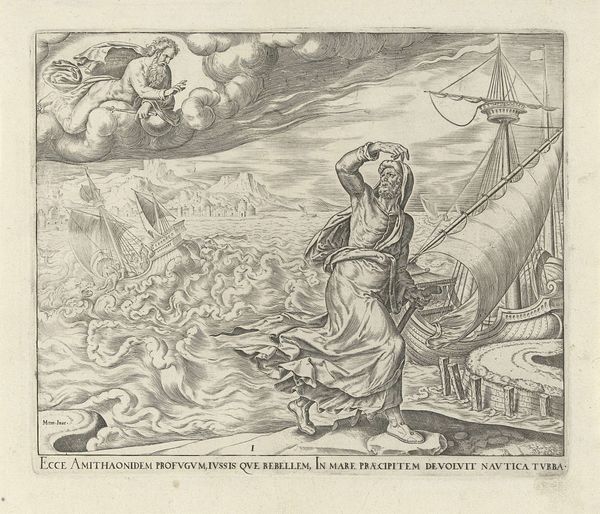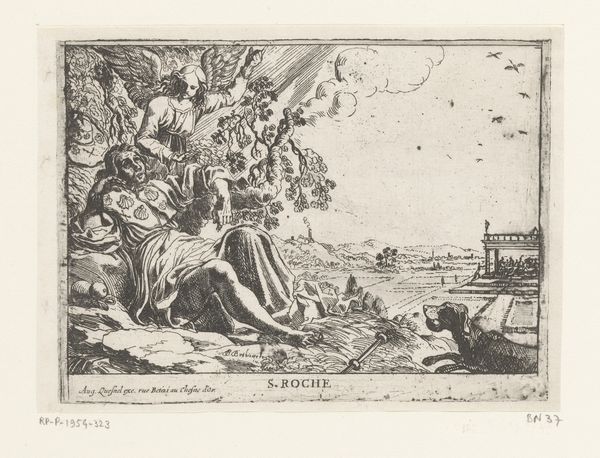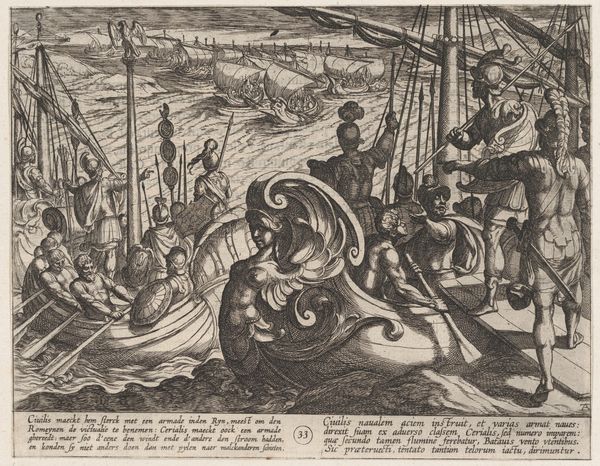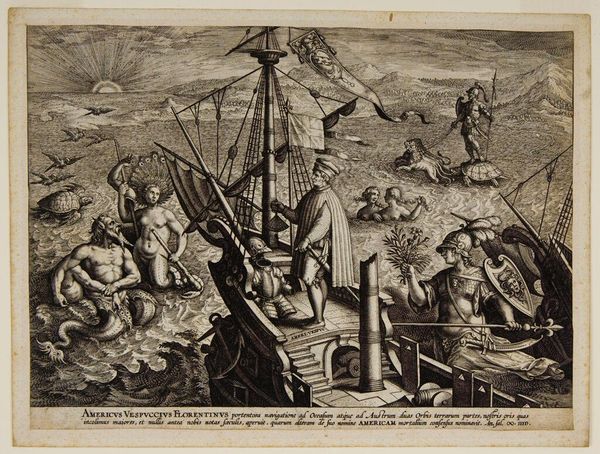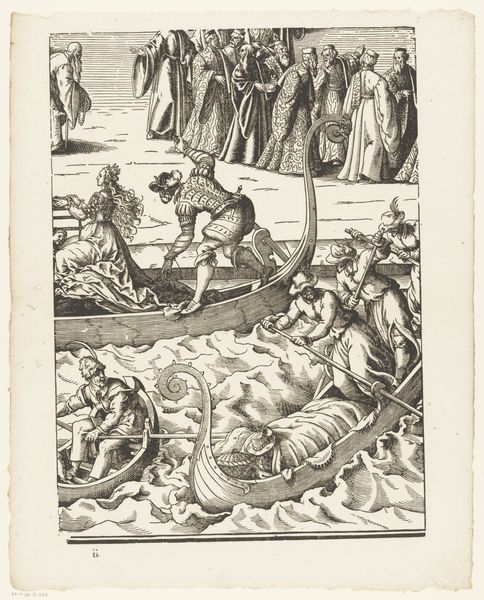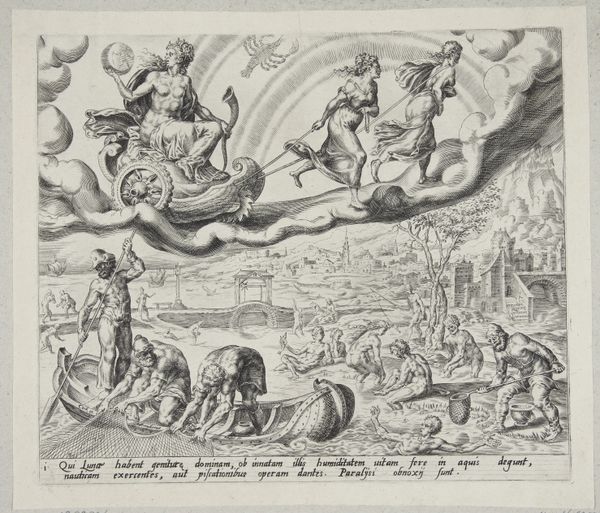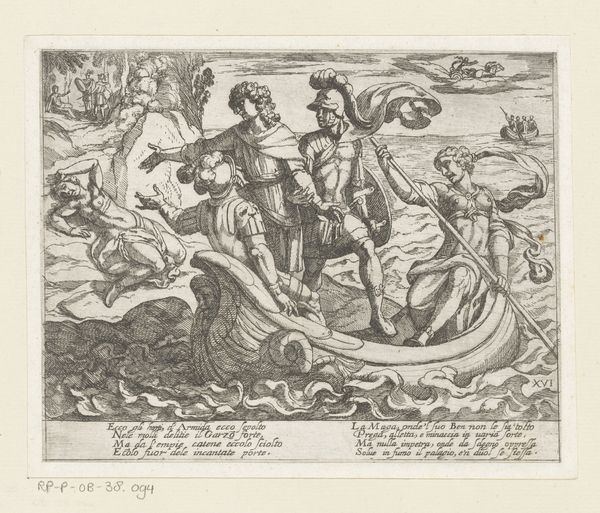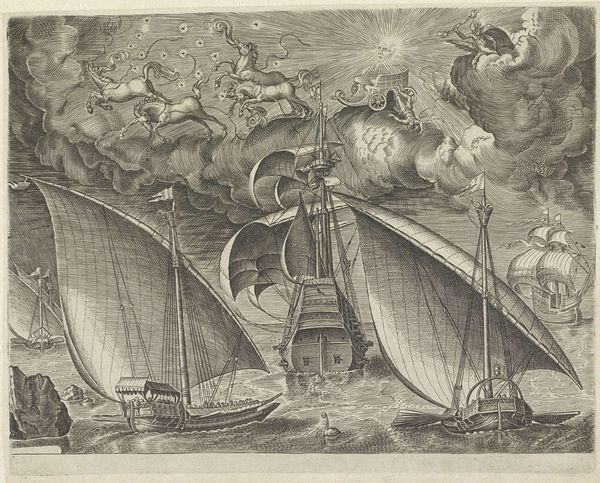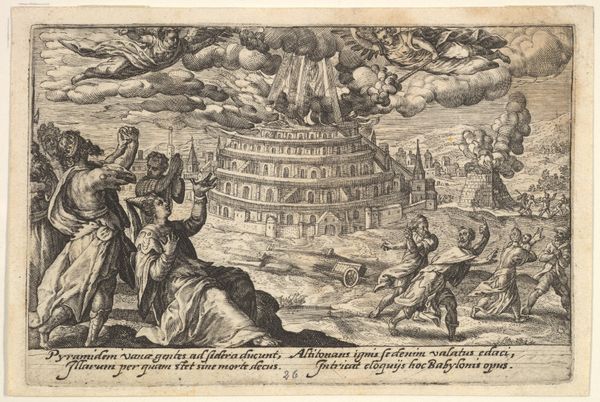
Dimensions: 230 mm (height) x 270 mm (width) (monteringsmaal), 207 mm (height) x 250 mm (width) (plademaal)
Editor: Here we have Philips Galle's 1566 engraving, "Jonah fleeing the presence of the Lord." The chaotic scene of the turbulent sea contrasts so strongly with the serene, almost dismissive, figure of God in the clouds. What strikes you when you look at this? Curator: The symbolic weight of the storm itself. In the visual language of the 16th century, storms weren’t just weather events. They represented divine wrath, the upheaval caused by defying a higher power. Look how Jonah averts his gaze; he isn’t just physically fleeing, but wrestling with the internal consequences of disobedience. Notice, too, how Galle renders God not as angry, but as a detached observer. Does that evoke any particular ideas? Editor: It’s like God isn't surprised, more like disappointed. And the positioning of God above the storm… is it meant to show his control? Curator: Precisely. And consider the other details—the crumbling ships, the expressions on the sailors’ faces—they represent humanity's struggle against forces beyond its control. This print uses powerful imagery to depict not just a biblical story, but a timeless struggle between free will and divine mandate. What feeling do you leave with? Editor: I initially focused on the chaos, but now I see it as a visual representation of internal turmoil and the consequences of challenging established authority. Thanks! Curator: Indeed, recognizing the long cultural history behind these symbols offers profound insights into art.
Comments
No comments
Be the first to comment and join the conversation on the ultimate creative platform.
